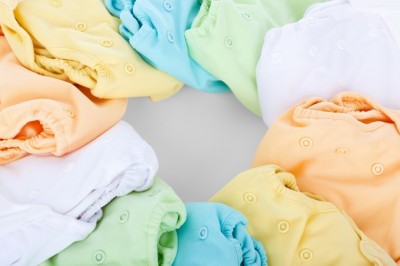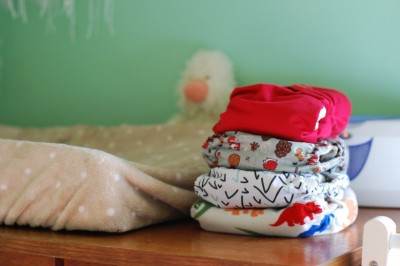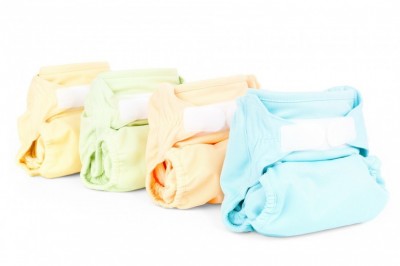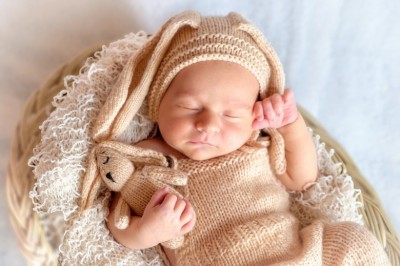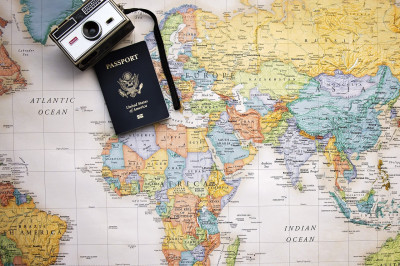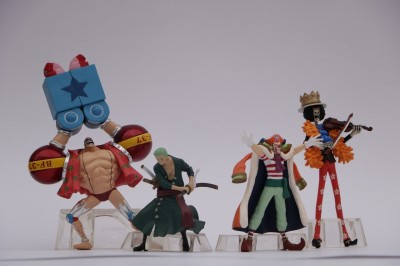Types and Brands of Diapers to Use for Bed-Wetting and Companies that Sell Them
In cases where there have been numerous attempts to cure the bed-wetting without success or if the options available to the individual are not feasible(or desirable for whatever reason) then I think it would be prudent at this point to consider various forms of protection.
The current choice of most parents to manage their child,adolescent,or teenagers bed-wetting are pull-ups and "Goodnites" Both the idea for introducing pull-ups and "Goodnites" into the marketplace and the use of these products is that they are a more underwear like product and therefore it is believed they are less stigmatizing to the youngster,but for all intents and purposes theyre still diapers-the only difference being they dont have tapes. No amount of cosmetic changes is going to change the fact that theyre still diapers. However most people seem to feel that wearing the product will make the user feel more "dignified" which by default implies that the people who decide to use diapers instead for their bed-wetting should feel undignified,and unfortunately many people using diapers to manage their bed-wetting do feel this way.
While it is good to have different choices to manage ones incontinence we must not forget that these products are designed for the same purpose-keeping the person dry at night-and therefore no matter what you call them or how they look theyre all basically diapers. Like the saying goes- "a rose by any other name is still a rose." While the pull-ups and "Goodnites" work for a large number of people Ive read and heard about cases where these garments proved ineffective at keeping the youngster dry at night. Many youngsters are very heavy wetters particularly at night and wet right through the pull-ups or "Goodnites." If the pull-ups or "Goodnites" dont work then the parents should have the child or teenager wear diapers instead.
There are many different diapering options available for older children,adolescents,teenagers,and adults that wet the bed including pin-on cloth diapers covered with plastic pants and disposable tape-tab diapers(known as disposable briefs).We must remember that with most problems in life there is no one size fits all solution. Bed-wetting and choosing an appropriate garment to manage it is no exception.
Disposable briefs are the term for adult diapers. They come in youth and adult sizes and look and fit just like Pampers-they have tape tabs,elastic leg gathers(in addition some have elastic waist bands for added protection) and either a non woven cloth like outer cover or a plastic outer covering. It seems like within the past several years the adult diaper manufacturers are following the lead of the baby diaper manufacturers and are using a non woven cloth like outer covering with their diapers. I think the reason for this is twofold. The first reason is that perhaps it makes the diapers more breathable which means they might be more comfortable with some users,and second it makes the diapers more discreet-i.e. there is none of the telltale crinkling or rustling sound that diapers with a plastic outer covering make when the user moves around. However some people claim that the non woven cloth outer covering makes the diapers feel clammy when wet,they cause abrasion between the legs,and theyre not as effective at protecting the individual. As for purchasing diapers that have a plastic outer covering and make a rustling noise,if the person is only wearing them at night this shouldnt be a concern.
If parents decide to purchase plastic pants and cloth diapers to manage their youngsters bed-wetting there is one thing to keep in mind and that is the terminology used in referring to waterproof pants. Before plastic pants came out parents used rubber pants for their babies. Then plastic pants came out and even though people used both styles of pants for awhile,eventually the rubber pants were phased out. I dont know of any companies that make rubber pants for babies but there are a couple companies that make rubber pants for older children and adults.
Many people use the term "rubber pants" as a generic term for waterproof pants particularly plastic pants. Nowadays when people use the term "rubber pants" they actually mean plastic pants. I guess after rubber pants were phased out and plastic pants became the dominant pant used for both babies and incontinent adults the term "rubber pants" just kind of stuck and many people continued to use the term "rubber pants" as a catch all term for waterproof pants. Also "plastic pants" are the same as "vinyl pants"-vinyl is a type of plastic so people use the term interchangeably. Finally if you decide to buy waterproof pants from another country such as Canada or England its important to beware of the following. Some companies manufacture and sell "PVC(which stands for polyvinyl chloride) pants. This is also a plastic material and these pants are the same as the "vinyl" and "plastic pants." I just wanted to bring this up so people arent confused when buying waterproof pants. Ive also heard some people use the term "rubber sheet" as a generic term for waterproof sheets-particularly plastic or vinyl sheets.
Regarding choosing a product to manage the youngsters bed-wetting this can be a tough choice for many parents. There are a couple of reasons for this. First,there are a number of different styles of garments out there. Second there are many brands of diapers to choose from. This can be very overwhelming. To make things more complicated there are styles within styles. For example if parents use cloth diapers there are many different ways to fasten the diapers and as a result different styles. These include pin-ons,diapers with Velcro, snap-on diapers,and pull-ons. The pin-on diapers come in different styles-prefold, flat,and contour. Contour diapers are hourglass shaped diapers without elastic in the legs or back. Flat diapers are rectangular diapers made with one layer. Prefold diapers are also rectangular shaped but have layers built in with more absorbency sewn into the middle part.
Cloth diapers are also made of different fabrics such as gauze, birdseye ,flannel,and diapers lined with terry cloth. Some of these fabrics are more breathable(and as a result more comfortable) than others and some are more suitable for bed-wetting. For instance some companies have cloth diapers specifically designed for night use-i.e. they have extra absorbent layers sewn into the diapers for added protection at night. Cloth diapers like disposable diapers come in both youth and adult sizes. Also if the parents choose to use cloth diapers they must use waterproof pants to cover the diapers.
The most popular form of waterproof pants are plastic pants. The current crop of adult and youth size plastic pants seem to be better made then the plastic pants made years ago. Comco, Suprima, and the Leakmaster Deluxe pants (made by Gary and sold by Adultclothdiaper.com) are just three brands of plastic pants that have a reputation for being made of a real thick durable plastic and thus well made. Ive also heard that with some waterproof pants if the person uses various protective creams before putting on their diapers these have a tendency to break down the material of the waterproof pants. This seems to happen primarily with rubber pants(although this might just be the case with certain brands).
Waterproof pants come in two styles-pull-on and snap-on. From what I understand the snap-on styles are used primarily with bedridden and non-ambulatory patients because with these types of patients the pants are easier to get on and off. In addition its to my understanding that snap-on plastic pants are used by parents for their babies because presumably these are easier to put on and take off(although personally I would think it would be just as easy using pull-on plastic pants since were dealing with a small child. I would also think in a situation like that it would be relatively easy to put the pants on as opposed to putting them on an incontinent adult which would probably be harder for various reasons).Ive also heard that snap-on plastic pants might be more breathable due to the fact that theres a slight opening because of the snaps. This in turn allows air to circulate more freely. That being said from what I understand the snap-on plastic pants are prone to leaks with some users at night especially if the user moves around a lot or sleeps on his or her side. Also Ive heard that theres a tendency for the snaps to break in some cases. Finally snap-on plastic pants are more expensive than pull-ons.
Disposable diapers for heavy urinary incontinence such as bed-wetting come in two styles-pull-on and tape-on briefs. Disposable briefs as mentioned previously have the same design and fit as baby diapers. You can also get diaper doublers known as booster pads, liners,and diaper inserts to put in disposable diapers to increase the level of absorbency in the diaper. Some companies also have inserts for cloth diapers. Ive heard of some people lining their cloth diapers with baby cloth diapers which can be purchased in places such as Walmart and Target.
People have different opinions as far as what type and brand of diapers to use for bed-wetting-some people swear by a certain brand or style of diapers whereas others try the same brand or style and dont like it. Many companies have samples of disposable briefs for various incontinence needs which they will send you either for free or for a nominal fee. In addition to using diapers the parents should cover the bed with a waterproof sheet in case the diapers leak. Waterproof sheets generally come in two styles, flannel with a rubber backing and plastic(also known as vinyl).The vinyl sheets in turn come in two styles-zippered or fitted. Although there are other styles of waterproof sheets the vinyl and rubber sheets seem to be the most popular ones.
Ive heard about people using all types of covers to protect their youngsters bed. One woman on a parenting forum said she used a plastic tarp to cover her childs bed. In addition Ive read that vinyl shower curtains are a good way to protect the bed. One woman I knew covered her daughters bed with a regular plastic sheet. For example if you have a roll of plastic sheeting (like the kind you get in a hardware or contractor supplies store) or are considering buying one you could cut off a piece and place it under the fitted sheet or mattress pad. Many people have a roll of plastic sheeting to use for stuff such as yard work,painting,remodeling,concrete work,covering materials stored outside,covering mulch,etc. In addition some people probably have a roll of plastic sheeting from back when Homeland Security was encouraging everyone to buy plastic sheeting to protect against terrorist attacks.
If you do have a roll of plastic sheeting you might consider using some of it to cover your child or teenagers bed. There are several reasons for this. One,since you already have the plastic on hand it saves you money because you dont have to purchase waterproof sheets(not that waterproof sheets are all that expensive but in todays day and age every penny counts).Two,the hardware store plastic is pretty durable and will last for a long time. Three,you can customize how much plastic you cut to lay over the childs bed. Fourth,you can cut multiple sheets which means you dont have to use the same sheet over and over which cuts down on wear and tear. Plastic sheeting comes in several thicknesses including 3,4,and 6 mil. My feeling is the thicker the better because if the youngster rolls around a lot at night theres less wear and tear on the plastic which means it will last longer. Besides the woman I just mentioned Im not sure if anyone else uses this type of plastic to protect the bed from bed-wetting but sometimes its good to be a trend setter. Like with any other situation in life its good to think outside the box and experiment with new ideas. This might be a cost effective and practical way to deal with bed-wetting.
If parents decide to use either the plastic sheeting from a hardware store or a plastic tarp to cover their child or teenagers bed its important to keep in mind that this type of plastic makes a rustling sound which some people might find unpleasant. The crinkling noise of the plastic might make some children,adolescents,or teenagers feel self-conscious. On the other hand some individuals arent bothered by this. Some children might be bothered by it at first but eventually get used to it. Since most bed-wetters are deep sleepers they might not have any problem adjusting to the crinkling of the plastic. One way to deal with this is to put the plastic under the fitted sheet or mattress pad and to place several layers of sheets or towels over the plastic. This will muffle the crinkling sound of the plastic. If however the youngster does have difficulty sleeping in a bed covered with this kind of plastic the parents should consider covering the bed with another type of waterproof sheet.
If you decide to go the cloth diaper route and if your budget permits you might want to consider purchasing the various styles of diapers such as pin-ons and pull-ons in addition to choosing diapers made of the different fabrics previously mentioned in order to determine what works best in your particular case. Pin-ons might be the best choice in many circumstances particularly for bed-wetting. There are several advantages to using pin-on diapers for bed-wetting: a.)these tend to be the most absorbent of all the styles of cloth diapers b.) with Velcro diapers the Velcro can wear out after a number of washings and c.)with snap-on diapers sometimes the snaps come off. d.)you can layer more material in a pin-on diaper(i.e. you can put more inserts in a pin-on diaper) than a pull-on diaper in order to make it more absorbent which is especially good for night use as people tend to wet more at night..Adding more material to a pull-on cloth diaper isnt as feasible because it tends to bunch up and one woman I spoke to at a company that sells both kinds of diapers says the pin-ons are more secure and the pull-ons tend to sag if the user is a heavy wetter. In addition its hard to keep the inserts in place in a pull on cloth diaper. A couple other people I spoke with also said that in general you have more flexibility with the pin-on diapers as opposed to the pull-ons. For instance you have a lot of latitude with how and wear you fold them in order to prevent leaks-you can make them thicker on the sides,in the front,or in the back. I read about an individual who is a side sleeper and he overlapped more material in that area in order for the diapers to offer better protection with this particular situation.
I suspect that the pull-on cloth diapers are better suited for daytime use and people who have light incontinence-the pin-ons on the other hand are generally better for people suffering from heavy incontinence such as bed-wetting. In fact many people consider pin-on diapers to be the best diapers to manage bed-wetting.
There is one more thing Id like to bring up regarding cloth diapers and plastic pants. Some people find that the cloth diapers and plastic pants are too hot and as a result too uncomfortable to wear in the summer months and during this time they switch to disposable diapers. Also some people alternate between disposable tape-on diapers and cloth diapers-on some nights they wear the cloth diapers and plastic pants and others they wear the disposable diapers so they dont have to wash the cloth diapers as much. The thinking behind this is that it saves some wear on the cloth diapers. Parents might want to consider experimenting with both kinds of diapers to determine what works best in their particular situation.
Choosing an incontinence product is like everything else in life-theres no one size fits all solution. It requires a lot of experimentation and trial and error. This entails getting other peoples opinions(there are incontinence forums where you can pose questions about various brands and styles of garments) and then trying the brand or particular style of diaper. Keep in mind that a persons recommendation of a particular brand or style of diaper is just an opinion and while its good to get other peoples opinions you have to try the brand or style of diapers out yourself and come to your own conclusion.
Also before buying a whole case or pack of a particular brand of diaper its advisable to contact the company to see if they have samples available-after all you wouldnt want to spend a lot of money for a product that might not work for you. A person shouldnt get discouraged if they have difficulty finding the right product to manage their bed-wetting. With a little persistence and patience theyll eventually find a garment to suit their needs.
Right now Id like to give a list of several companies and their contact info that manufacture and sell both cloth diapers and disposable briefs for older children,adolescents,teenagers,and adults that wet the bed. Id also like to mention several brands of both cloth diapers and disposable briefs that have good reputations particularly for night use. There are several companies who sell disposable diapers that are highly regarded by many people. One such company is HDIS which stands for Home Delivery Incontinence Supplies. Their web address is www.hdis.com and their phone number is (800)269-4663.HDIS has a personalized delivery plan in which you can set up a schedule in which to have your products delivered. For example if you order a case of diapers and they run out in 4 weeks you can set it up with them beforehand to have another case delivered before you run out. You can set it up for whatever delivery time you need. You also get a five percent discount on cases of diapers if you order this way. I would check their website or give them a call for further details. Continence Connection is another place that sells a wide variety of incontinence supplies. Theyre run by a nurse named Robin Howe who specializes in incontinence. Their web address is www.continenceconnection.com and their phone number is (888)356-6993. Theyre also open 24/7.
XP Medical is another company which has a good reputation. They have a large selection of diapers. Their number is (888)485-2268.ABAIP also has a large selection of diapers and from what I understand they are run by a person who is incontinent so they will be especially knowledgeable in this area. Their web address is www.abaip.com and their number is (888)401-5311.If you need cases of diapers for your bed-wetting child or teenager I would check with several mail order places to get the best deal. As with everything else in life its important to shop around.
As far as pin-on cloth diapers are concerned there are a number of places that sell them. Angel Fluff diaper company manufactures and sells pin-on cloth diapers for older children,teens,and adults. Their phone number is (800)996-2644 and their web address is www.angelfluff.com Another company that makes pin-on diapers is Loving Comfort. Their phone number is (717)308-0662.Kins a company out of Canada also makes pin-on cloth diapers for older children,teenagers,and adults. Their phone number is (800)665-2229.Finally Adultclothdiaper.com makes and sells pin-on diapers for older children,teenagers,and adults. Their phone number is (877)215-9004.If you use pin-on diapers for bed-wetting you must cover them with waterproof pants. The most widely used waterproof pants are plastic pants. My article "Brands of Plastic Pants for Older Bedwetters" discusses some of the more popular brands of plastic pants used by bedwetters. In addition some people have experienced leakage with pin-on diapers. Most of the time this is due to the fact that the diapers might not have been folded and pinned on properly. My article "Additional Information Regarding Pin-On Diapers for Older Bedwetters discusses this in more depth.
Some people have a favorite style of diaper such as pin-on and stick with that,whereas others are happy using both pin-on diapers and other types such as tape-on disposable diapers. Since people have different needs and preferences for managing their bed-wetting and since there are so many different types and brands of diapers available to meet these needs and preferences,its a good idea to be flexible in trying out different garments because even though youre happy with one product to manage your bed-wetting, there might be a product out there which would better suit your needs. In addition new brands and products for managing bed-wetting are coming out all the time. Also peoples needs and preferences sometimes change over time. While there is something to be said for sticking with what works, theres also something to be said for trying different brands and products. Sometimes thats the best way(and some people would argue the only way) to figure out whats most effective for a particular person and their circumstances. No two people are alike and nowhere is this more true than with choosing an appropriate diaper to manage ones bed-wetting.
In terms of disposable diapers for bed-wetting there are several brands that have good reputations. Abriform X-Plus made by Abena, Molicare,Unique brief(which I believe is also known as the Wellness brief),Tranquility All-Through-The-Night disposable briefs manufactured by Principle Business Enterprises, Mega Careline, Tenas,Eurobrief,and Secure X-Plus briefs. The Secure X-Plus Briefs are sold by two places. One of the places is Secure Personal Care. Their web address is www.securepersonalcare.com and their toll free number is (866)440-0049.The other place you can buy these briefs is G.Hirsch and Company. Their web address is www.ghirschco.com Their toll free number is (800)638-8800 and their other phone number is (650)692-8770.The Eurobrief is sold by Mediprime. Their web address is www.mediprime.com and their toll free number is (800)825-1288.
When shopping for disposable briefs its important to remember that some companies make two styles of disposable diapers-one with a plastic outer cover and one with a cloth like outer covering. Some people feel that the diapers with the plastic outer covering offer better protection and are more comfortable whereas other swear by the diapers with the cloth like cover. Tena I believe just makes diapers with a cloth like outer cover. Abena make diapers with both a plastic outer covering and a cloth like outer cover. Molicare makes diapers with a plastic outer covering-Im not sure if they also make a diaper with a cloth like outer cover. Molicare make different lines of diapers. The most absorbent of these is the Super Plus Fitted Briefs. Out of all the Molicare diapers these are presumably the best to use for heavy incontinence such as bed-wetting. They have a plastic outer cover and extra padding in both the front and rear wings for increased protection and comfort.
Regarding using disposable diapers with either a cloth like or plastic outer covering I would ask the company that sells both kinds to send you a sample of each in order to determine what works best for you. You can get the Tranquility from HDIS .You can get the Molicare Super Plus briefs from both XP Medical and ABAIP. In addition you can purchase Molicare briefs from HDIS but they dont appear to carry the Super Plus briefs-I was on their website recently and I just saw the Molicare Super and the original Molicare. Although these are good from what I hear theyre not as absorbent as the Molicare Super Plus briefs. You might want to contact them and see if they can special order the Super Plus briefs from the manufacturer or if they plan on carrying the Super Plus briefs in the future.
Other brands of disposable briefs include Wings by Kendall,Prevail by First Quality,Whitestone,Dignity,At Ease, Attends, and Depends but Ive heard mixed reviews about some of these brands. It would be a good idea to contact the companies and see if they can provide samples. HDIS has a brief sample pack-I believe its $9.95 for the pack. In addition you can buy diaper doublers known as booster pads,liners,and diaper inserts to put in disposable diapers to make them more absorbent. They also make booster pads for cloth diapers and some people purchase baby cloth diapers from places such as Walmart and Target to put in their adult cloth diapers to increase absorbency. Diaper pins(which are referred to as safety pins) and diaper rash ointment can also be purchased from these stores.
Many parents find that it can be quite a battle convincing their youngster of the merits of wearing diapers to bed. If youre child or teenager is resistant to the idea of wearing diapers to bed you can read my article "Ways Parents Can Encourage Older Children,Adolescents,and Teenagers to Wear Diapers to Bed and Other Topics." This article discusses different methods parents can use to encourage an older child,adolescent, or teenager who is reluctant to wear diapers to bed.
I hope the last few sections have given parents a good overview of the wide variety of products available to manage their child, adolescent, or teens bed-wetting. Its important for parents to have a wide variety of options to manage their youngsters bed-wetting. Just as parents have different types and brands of diapers to choose from for their babies,they should have different diapers to choose from to manage their older child,teenager,or adolescents bed-wetting.
Too often in life we use a cookie-cutter approach to manage problems and bed-wetting is no exception. Just as a carpenter uses the most effective tools for a particular step in building a house or for a particular project,we must use the most effective diaper to manage bed-wetting and this might be different for each individual for a variety of reasons. Unfortunately due to the taboo nature of bed-wetting the problem is not discussed much and as a result most people are unaware of the full range of products available. Most parents I believe just know about products such as pull-ups and "Goodnites." Hopefully as time goes on this problem will be less stigmatized and more people will feel comfortable discussing this problem. When this happens people will feel more inclined to talk about the different types of diapers out there to manage bed-wetting.

















